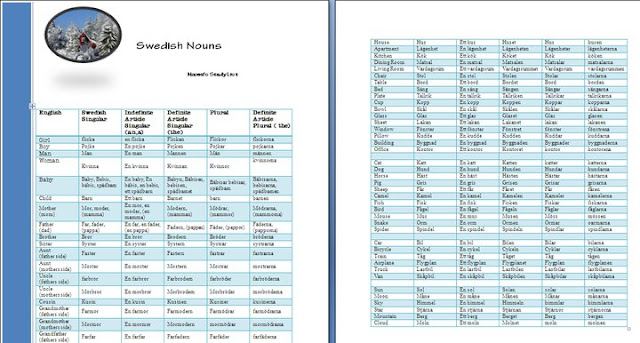Regardless
if you are teaching yourself a language with Pimsleur, Rosetta Stone, Living
Language or you are taking a class, note taking is a fundamental part of the
process. Everyone must take notes. There is no way around it.The fine art of note taking is different when you are trying to learn a foreign language.
One Binder for Each Language
Each
language that I studied had its own three ring binders. I have a French binder,
Italian binder, Spanish binder, and Swedish binder. Within the three ring binders,
I organized my notes by topic, date or lesson. Many of my binders are over ten years old. I still have them packed up in the top of my closet. Every once in a while I will go back and take a look at my earliest language binders. It is good to go back and look at the process I went through to become fluent in French.
I
usually follow the same format when I decide to learn a new language.
If
you are taking a class (my personal recommendation), always carefully read the
syllabus. Pay attention to the topics you will be covering. If you are taking a
beginning French class, you will cover about four tenses: present, passé
compose, imperative, future and maybe the subjunctive tense. Your notes should
contain clear conjugations for each of these tenses.
Compile your list of verbs
At
the end of the course, you should have compiled a list of 50 common verbs, and
conjugated them in each of these tenses. Print out the conjugations with some
colorful illustrations to make it more attractive. Print it out, put it through
the three hole puncher and insert it into your binder. Voila! Oh heck, if it
looks that good you should laminate it too.
Your
notes should first be hand written. Take the material and rephrase it in your
own meaningful way once you have understood it. Insert your own personal
pronunciation key below certain words that are difficult to pronounce. In
French I wrote (bee-yeah) next to the French word for ticket, billet. In the images below are my own personal notes for Swedish and Spanish. I printed these documents and put them into my binder.
Notes should include grammar points and examples, expressions from dialogues, vocabulary and anything else you find noteworthy.
Notes should include grammar points and examples, expressions from dialogues, vocabulary and anything else you find noteworthy.
I
recommend opening Microsoft word, search Google for images and label each image
in your target language. For example, look for images of Fruit. Paste them onto
a word document, then type in the name of that fruit in your target language.
Once you filled up the page with fruit words, move on to vegetables, meats and
grains. When you are all done, print it, punch it, and put it into your three
ring binder.
One of my tricks is to get help from native speakers. This is not something you should do when you need to write an essay. When you need to create notes however - native speakers are the way to go.
First, formulate all the sentences, words and phrases that you want to learn. If your friend is not too busy, ask them to translate them for you into your target language. I found this very helpful when learning Swedish.
One of my tricks is to get help from native speakers. This is not something you should do when you need to write an essay. When you need to create notes however - native speakers are the way to go.
First, formulate all the sentences, words and phrases that you want to learn. If your friend is not too busy, ask them to translate them for you into your target language. I found this very helpful when learning Swedish.
Take
your binder with you and go over the notes when you have some spare time. For
example, you are in the Laundromat waiting for your clothes to dry; this is a
perfect time to go over your notes. Food is cooking; you are at the airport, or
even relaxing in the bathtub. Each extra minute you can accumulate will lead
you towards fluency.
Looking at your notes here and there, throughout the day, will embed the information into your memory. The most effective way to learn a language is to repeat the information over and over again, in short intervals and bursts. I personally find note taking to be an enjoyable activity. It is an opportunity to take dry material, and make something unique and different out of it. Anytime you are making something unique, you are making it meaningful to you. The best language learners sometimes do not have the most expensive programs, books, and Universities at their disposal. The best language learners make the most of what they do have, then they manipulate it to make it meaningful to them.
The beauty about this advice, is that languages are all about meaning.
XXXOOO
Looking at your notes here and there, throughout the day, will embed the information into your memory. The most effective way to learn a language is to repeat the information over and over again, in short intervals and bursts. I personally find note taking to be an enjoyable activity. It is an opportunity to take dry material, and make something unique and different out of it. Anytime you are making something unique, you are making it meaningful to you. The best language learners sometimes do not have the most expensive programs, books, and Universities at their disposal. The best language learners make the most of what they do have, then they manipulate it to make it meaningful to them.
The beauty about this advice, is that languages are all about meaning.
XXXOOO
Naomi











No comments:
Post a Comment